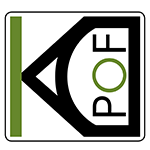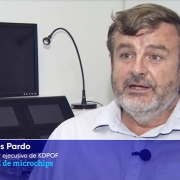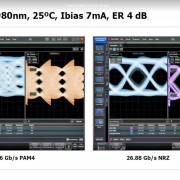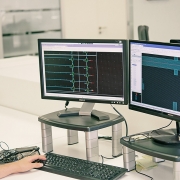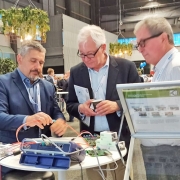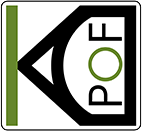Update on Optical In-vehicle Network at POF 2022 Conference
At the 30th International Conference for Plastic Optical Fibers, POF 2022, from September 26 to 28, 2022 in Bilbao, Spain, César Esteban will present “The Optical In-vehicle Network” on Monday, September 26, at 10:45. Following an update on the latest achievements and an outlook to future technology, he will also address traditional concerns about optical in automotive, including: cost, cable bending radius, vibrations, mechanical stress (tension, torsion, dynamic cycling), temperature, dirty environment, and port dimensions (PCB area and area of the optical header on the ECU front panel).
While automotive use cases increase the bitrate demand on the links, it should not scale the cost or the issues. Optical provides a low-cost, robust and reliable solution for in-vehicle connectivity. Onboard communications are converging to Ethernet, which includes the automotive-specific 1000BASE- RHC optical gigabit physical layer (PHY) over plastic optical fiber (POF), standardized under the IEEE Std 802.3bvTM.
The first complete implementation of this PHY is available today, as the Physical Medium Dependent (PMD) block has been developed as an integrated circuit, packaged into a surface mount technology (SMT) component. On the transmission path, it integrates a resonant cavity light emission diode (RCLED) emitting 650nm eye-safe light and an LED driver. On the reception path, it has a PIN photodiode and a transimpedance amplifier (TIA). The package includes an internal electromagnetic metal shielding to minimize any electromagnetic compatibility issues. The Medium Dependent Interface (MDI) transmission medium is step-index POF (SI-POF), meeting the requirements of IEC 60793-2-40 subcategory A4a.2 multimode plastic optical fibers.
EMC Superior Performance with Optical
Connector header for this new PMD transceiver is being offered by multiple suppliers at a low cost, as it is plastic made and they all share the same footprint. POF-based optical connectivity allows multi-port and waterproof connectors. The optical cables can be installed in the same assembly process as the copper cables.
Compared to copper-based links, this POF PHY has an EMC superior performance, which prevents the need for expensive, heavy, bulky cables with rigid and aging-prone shielding. The inherent galvanic isolation of optical fiber solves ground loop issues and return currents through the shielding of the cables. The target optical performance of this optical technology allows 1 Gb/s links over 40 meters of POF cable or 15 meters with up to four in-line connectors, thanks to the optimized lenses inside the header. This distance span enables long-reach applications as well, such as for buses, trucks, and other commercial vehicles.
We look forward to meeting you in Bilbao!
